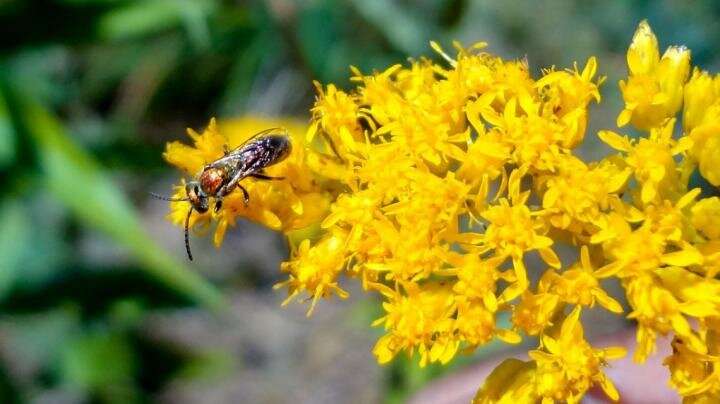Research traces how farmlands affect bee disease spread

A new Cornell University study on bees, plants and landscapes in upstate New York sheds light on how bee pathogens spread, offering possible clues for what farmers could do to improve bee health.
The study, "Landscape Simplification Shapes Pathogen Prevalence in Plant-Pollinator Networks," which used empirical data and mathematical modeling, reveals how surrounding landscapes might affect the ways that bees and flowers interact, and how interconnected networks of plants and pollinators influence disease spread in bees. The findings are important because bee diseases have contributed to pollinator declines worldwide.
"Our results are telling us that we need to think about [bee, flower, pathogen and landscape] interactions," said Laura Figueroa, the paper's lead author and a doctoral student in the lab of Scott McArt, assistant professor of entomology.
The study found that 65% of bee species and 75% of flower species carried pathogens, and that pathogens are transmitted between bees and flowers.
Figueroa and colleagues began with an empirical study of the bee species present on wildflower strips in upstate New York. In 2012, the researchers began planting uniform plots of wildflowers on 11 sites with varying amounts of surrounding farmland. In 2015, the team observed, tracked and recorded which bee species visited which flowers, ultimately describing the interaction patterns of 46 bee species and 13 plant species. They found that the common eastern bumblebee, as the dominant bee species in upstate New York, has a greater influence than other species on disease transmission dynamics.
The researchers also collected bees and flowers from each site and screened them for pathogens in the lab.
"In more simplified landscapes [with more farmland], the dominant species visited more plant species," Figueroa said.
This study found the bumblebees' increased diet breadth spread pathogens across many more flowers, she said, which in turn reduced each individual bee's exposure to new pathogens.
The researchers then entered the data from their empirical study into a mathematical model. They found that on a community level, accounting for all bee and flower species, the likelihood of a communitywide outbreak of disease decreased when the network of flowers and bees was highly interconnected, again, because pathogens were diluted across more flowers.
This is especially important when farmers plant wildflower strips to improve pollinator health.
While simple farm landscapes might lower disease spread on a communitywide level, each individual species behaves differently, depending on which flowers they visit, and which pathogens affect them. Future studies will parse out how individual species fare in simplified landscapes, which has important conservation implications.
"Potentially," Figueroa said, "we could develop mixtures of wildflower species that can not only maximize food for the pollinators, but can shape interactions in a way that reduce the likelihood of disease spread."
More information: Laura L. Figueroa et al, Landscape simplification shapes pathogen prevalence in plant‐pollinator networks, Ecology Letters (2020). DOI: 10.1111/ele.13521
Journal information: Ecology Letters
Provided by Cornell University





















